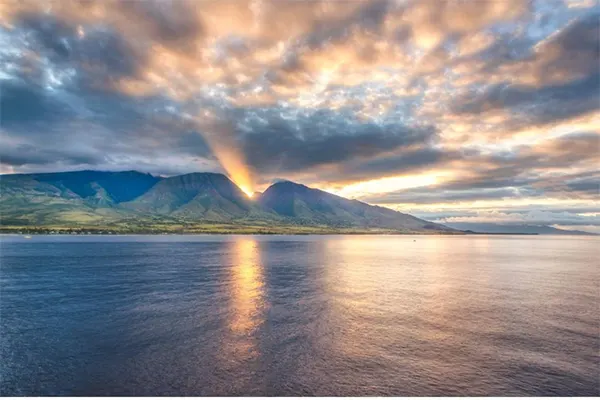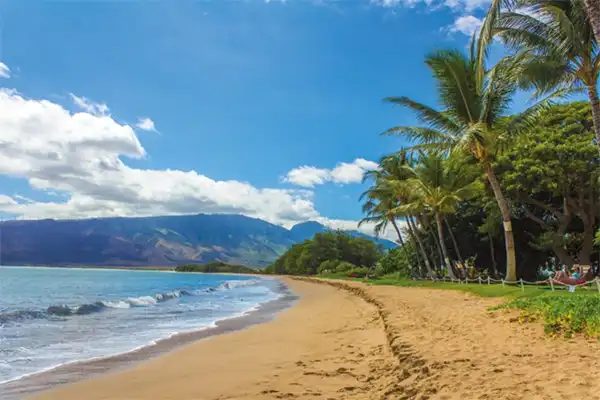While many beaches take their name from nearby local landmarks, it’s very rare to find a beach that’s named for a slaughterhouse. But Maui’s Slaughterhouse Beach, located near the former Honolua Ranch, did just that.
And although the slaughterhouse is, thankfully, long gone, the name stuck. It can lead some visitors to worry about what a trip to the beach might be getting them into.
Nowadays, visitors who aren’t put off by the name flock to Slaughterhouse Beach for epic winter swells and chilled out summer waves.
Take a look at our guide to learn more about this odd name, and why you should still consider a visit to Slaughterhouse Beach.

So, Why Did Someone Name It Slaughterhouse Beach?
Table of Contents
On a coastline known for powerful breaks and heavy winds, you might wonder if the name Slaughterhouse Beach was chosen to honor the experience of many an unsuspecting boogie board.
But the name is a lot less metaphorical than you might imagine. Slaughterhouse beach used to be overlooked by a slaughterhouse and tannery, and, for some reason, the name stuck.
Before the resorts moved in, the verdant northwest coast used to be home to Honolua Ranch. At one point, the ranch occupied over 24,000 acres, before being slowly converted to a pineapple plantation.
The slaughterhouse and tannery that the beach took its name from was owned by Honolua Ranch, and overlooked the sea.
The proximity of the slaughterhouse led to the slightly unfortunate name, which hung around long after the ranch itself was gone.
So, It’s Got Nothing To Do With The Waves?
Slaughterhouse Beach is pretty well known for having a strong winter surf that can pound against the beach. At times, heavy Kona winds can strip the beach of sand, exposing the rocks and increasing the danger.
It’s a popular spot with talented surfers who can understand the well-formed winter swells. But as you watch the large waves toss and turn the beach, you might think the name “Slaughterhouse Beach” seems surprisingly accurate.
While the name does sometimes match the conditions, it’s only a coincidence. But if you try to tackle the swells without the right experience, then you might feel a little like you’re getting slaughtered.
The waves at Slaughterhouse Beach can hit hard and rough, and even experienced surfers can find them tough to handle.
Is The Slaughterhouse Still There?
If the prospect of sunbathing on the beach with a slaughterhouse next door is slightly off-putting, don’t worry—the slaughterhouse was pulled down in the 1960s.
Now, the closest thing to food production in the area is the Coconut Caboose, an organic coconut producer with a food truck at Honolua Bay Lookout. The memory of the slaughterhouse is now immortalized in the beach.
While Honolua Ranch may have been founded to raise cattle and grow crops, it was gradually transformed into a pineapple plantation.
Eventually renamed Honolua Plantation, the ranch and slaughterhouse went out of operation. Which means it’s been a long time since the eponymous slaughterhouse was actually at work.
Don’t Let The Name Put You Off
We’ve all heard the saying don’t judge a book by its cover. Well, don’t judge a beach by its slightly odd name.
Slaughterhouse Beach features soft white sands and powerful surf, and the secluded setting lends it a natural charm.
Visit in summer, and you’ll find a secluded bay that backs onto towering cliffs covered in planting. During calm mornings, the water is good for swimming, and beginner boogie boarders will enjoy riding the swells.
You might even be able to snorkel, with the best spots being around the rocky cliffs to the north end of the beach.
In summer, Slaughterhouse Beach is a relaxing spot with a crescent of sand and postcard views framed by glittering cliffs.
But it’s in winter that Slaughterhouse Beach comes into its own. The high winds cause thick swells with exceptional form, and they draw top surfers from around the world.
The waves get big, and the breaks are powerful, giving something for boogie boarders and surfers alike to contend with.
When the waves pick up, Slaughterhouse becomes less appealing to non-surfers. Swimming gets unsafe, and snorkeling is impossible. It’s still a good place to sit and watch the surf.

Still Not Convinced?
Like many beaches on Maui, Slaughterhouse has a name based in the Hawaiian language—and this one is definitely more appealing than a slaughterhouse. In Hawaiian, the area is known as Mokule’ia.
This translates to “district of abundance”, and accurately reflects the lush growth of the area, as well as the history of ranches and plantations. On many maps, the beach is referred to as both Slaughterhouse Beach and Mokule’ia Bay.
The area also encompasses the Honolua-Mokule’ia Bay Marine Life Conservation District. This is a 45-acre area that includes Slaughterhouse Beach and Honolua Bay, and fishing is not allowed.
If you do manage to visit when the seas are clear, then you might be able to spot the marine life that has made this area worth protecting.
Visiting Slaughterhouse Beach
Slaughterhouse Beach is on Northwest Maui. To visit, follow the Honoapi’ilani Highway until you reach a small parking lot at the side of the road.
The parking is minimal, and you might struggle to find a spot on days with decent swells. Once you’ve parked, follow a stone staircase down to the beach.
The bay cuts into the cliff, so although you can spot the sea from the road, you can’t see the beach. Keep an eye out for parked cars, as these indicate where you can find the steps to the entrance, because there are no road signs.
Final Thoughts
Exactly why anyone decided to name a beach after a nearby slaughterhouse is still a mystery, as is why the name stuck.
However, squeamish visitors can rest assured that the slaughterhouse is no longer there, and hasn’t been around since the sixties.
If the name is still putting you off a visit, think of it as Mokule’ia Bay instead. This name means “district of abundance” and better indicates the natural beauty that makes the beach a top destination.
